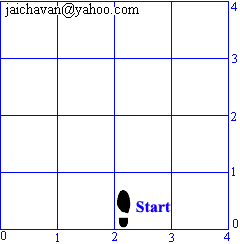
Email : [email protected] Or General Mailer
 |
Jai Chavan's
"Dance-Sport" Email : [email protected] Or General Mailer |
| Back || Master Pg. || Overview || Contents || Alphabetical Index || Home || Next |
Waltz: Basic Sequence: Part 4
| The first basic sequence. |
| Basic Sequence: | |
| 1. First Part 2. Second Part 3. Third Part 4. Fourth Part |
Reverse/Natural
Turn Hesitation Combination Under Arm Turn |
Fourth Lesson: Fourth Part/Underarm Turn
We will leave the turns for later.
This part is exactly same as the First Part/Regular. The only difference being that the count "12" is a pause when the body weight transfer does not take place. Thus the counts "11" and "12" are taken on the same foot.
Thus, if one starts the First Part/Regular with the Left foot moving forward, then for the count of "10" the Right foot moves backward. For the count "11" the Left foot is moved to the side, and for the count of "12" there is no movement. Thus for the next count "1" the Right foot will be moved to continue with this part.
Thus in the this part if one starts with the Left foot
forward, then after the first set of 12 counts one would be
starting with the Right foot forward. So for the first set of
twelve counts one would be moving "Forward Left foot, to
Right side, close feet, Backward Right foot, to Left side, close
feet". Moreover, for the next set of twelve counts
"Forward Right foot, to the Left side, close feet, Backward
Left foot, to the Right side, close feet".
| 1. Pause Step | |
 |
For the count of 12, the feet come together however, do not transferred the body weight to it, as done normally. As a result, if you start with the Left foot as shown in the diagram, then after the count of 12 you would be starting with the Right foot for the figure, Close Change. |
Alternative Pattern 1
Start the same exercise with the Left foot moving back.
Once this is achieved practice in pairs. Next practice doing the first, second and the fourth part together, changing every part after the count of ‘12’. If one starts with the Left foot forward then each of the parts is commenced with the respective/moving foot moving forward.
Note: It is important to be able to do the First, Second and the Third part of the sequence continuously, without a break before going for the Third part, since it is a combination of the first two parts. So, please practise.
| Back || Master Pg. || Overview || Contents || Alphabetical Index || Home || Next |